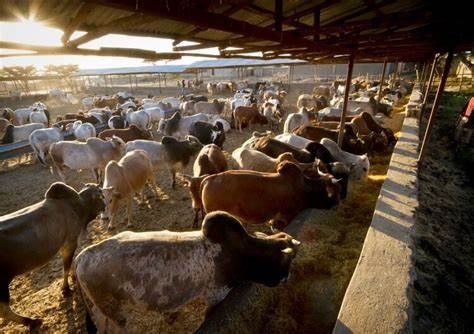
- Over 109,000 livestock exported in quarter
ADDIS ABABA-Ethiopia’s live animal export volume has seen significant progress following recent macroeconomic reforms, the Ethiopian Agricultural Authority (EAA) revealed.
Speaking to the Ethiopian Press Agency (EPA), EAA Animal Drug Regulatory Lead Executive Officer Solomon Kebede (PhD) stated that the reforms have been a turning point for the development of the livestock sector.
He explained that the authority has been actively monitoring the sector and providing support to animal husbandry farms through vaccine distribution and fodder supplies. Additionally, the EAA has extended incentives to local manufacturers, encouraging them to produce high-quality and effective veterinary medicine.
However, Solomon noted that many farms continue to struggle due to the lack of sufficient cold chain storage facilities across the country.
While poultry production shows notable progress, other sectors like dairy, aquaculture, and apiculture are still at a nascent stage.
The Animal Products and Input Quality Control Center, located in the Kality area, has been conducting laboratory tests for the past decade. “The center has expanded its testing capabilities and is now 93% complete in accrediting 13 tests, aiming to foster third-party trust,” Solomon added.
Leveraging vaccines from the African Union Pan African Veterinary Vaccine Centre (AU-PANVAC) regional lab, the center ensures the quality of animal feed and products such as eggs, milk, honey, meat, and more.
On the regulatory front, the Animal Quarantine Inspection and Certification Desk Head, Asayegn Bekele (PhD), reported that the government has taken bold measures to combat illegal livestock trade. Multiple checkpoints and inspection channels have been established over the past few years to curb smuggling activities.
Despite these efforts, challenges persist as discrepancies in currency exchange rates and cumbersome bureaucracy have driven illegal exports, negatively affecting official trade. “Livestock continues to be smuggled annually to neighboring countries, undermining the formal export system,” Asayegn said.
Looking ahead, Ethiopia aims to export 390,000 livestock products in the current fiscal year, with 109,038 already exported in the first quarter, surpassing initial targets. Last year, the country exported approximately 257,000 livestock.
“Saudi Arabia, Oman, Yemen, and Bahrain remain the primary destinations for Ethiopia’s livestock exports,” Asayegn added, underscoring the sector’s strategic importance.
Ethiopia’s livestock export sector is crucial to the economy, supported by one of Africa’s largest livestock populations, including cattle, sheep, goats, and camels. The country ranks among the leading exporters of live animals, hides, and leather products, primarily to the Middle East.
BY ASHENAFI ANIMUT
THE ETHIOPIAN HERALD TUESDAY 29 OCTOBER 2024





